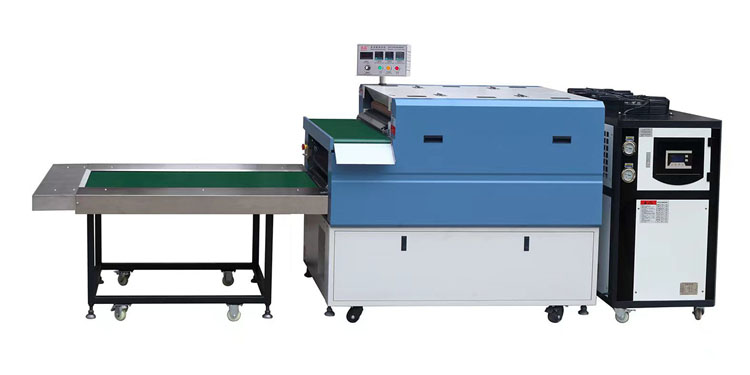A multifunctional hot and cold laminating machine is an advanced piece of equipment used in the laminating process, where a protective layer of film (either hot or cold) is applied to a material like paper, card, or plastic. This machine combines both hot lamination and cold lamination capabilities in a single unit, providing flexibility for different types of laminating jobs.

Key Features:
Hot Lamination:
Hot lamination uses heat and pressure to bond a protective plastic film (typically a polyester or BOPP film) to the material.
The heat activates the adhesive on the film, ensuring a strong bond and a smooth, glossy finish.
Hot lamination is ideal for projects that require extra durability and resistance to wear, such as ID cards, posters, and menus.
Cold Lamination:
Cold lamination uses pressure instead of heat to apply the adhesive film to the material, making it suitable for heat-sensitive items or delicate materials that cannot withstand high temperatures (e.g., certain inks or thin papers).
The cold lamination process typically involves self-adhesive films that are applied without the need for heat.
Cold lamination is ideal for materials that could be damaged by heat, such as photos, prints, or documents with ink that could smudge or bleed.
Dual Functionality:
Multifunctional machines allow users to switch between hot and cold laminating processes without the need for multiple separate machines, making them highly versatile and space-efficient.
They often come with adjustable temperature controls for hot lamination and pressure settings for cold lamination to accommodate different film types and material thicknesses.
Roller System:
The machine typically includes pressure rollers for both the hot and cold lamination processes. The rollers help ensure that the film adheres evenly and smoothly to the substrate, avoiding wrinkles or air bubbles.
Speed and Efficiency:
Modern multifunctional laminating machines are designed to work quickly, handling large volumes of laminating jobs in commercial or industrial settings.
Some models also have adjustable speed settings to cater to different types of materials or specific application requirements.
User-Friendly Controls:
Many machines come with digital or touchscreen controls for ease of operation. These interfaces allow operators to set specific parameters for temperature, pressure, and speed.
Some machines also include automatic film roll feeding, which minimizes downtime and ensures continuous operation.
Versatility:
These machines can handle a variety of materials, including paper, card, fabric, and more.
Some models also offer reverse lamination, which allows for lamination on both sides of the material simultaneously.
Applications
Print shops:
To laminate printed documents, posters, business cards, and marketing materials.
Packaging:
To apply protective coatings on packaging materials or labels.
ID card production:
For laminating plastic cards (e.g., ID cards, membership cards).
Photo finishing:
For protecting photographs or artwork.
Signage:
For creating durable, weather-resistant signage.
Advantages of Multifunctional Hot and Cold Laminating Machines
Cost Efficiency:
Reduces the need for multiple laminating machines, saving both space and investment.
Flexibility:
Operators can choose the best method (hot or cold) depending on the material and desired finish.
Quality Control:
Produces high-quality, durable laminated products suitable for a wide range of applications.
Speed and Productivity:
Can process high volumes of laminating work in a shorter amount of time, ideal for businesses with high throughput.
In summary, a multifunctional hot and cold laminating machine offers a flexible and efficient solution for businesses that require both heat-based and pressure-based lamination for different materials. It combines the benefits of both methods in one device, streamlining operations and ensuring high-quality finished products.
Post time: Dec-27-2024
